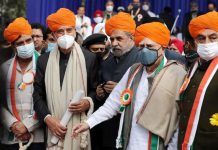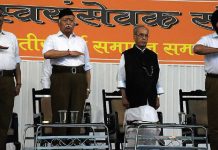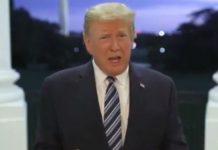
The focus is on Prime Minister Narendra Modi’s foreign policy initiatives, which have consumed much of his energy and time besides considerable financial resources of the country. Till now (June 22, 2018) he has set his foot on as many as 55 countries, including five visits to the US and China and four to Russia and Germany.
According to official figures, the maximum expenditure he incurred during his foreign travel was in 2016 (1.52 billion) though he made only eight trips and remained away from India for 29 days. In 2015, he made the largest number of foreign trips (12), remaining out of the country for 57 days but spent 1.34 billion on these journeys, less than the expenditure made in 2016 on this account.
Modi took over as Prime Minister on May 26, 2014, but during the seven months in his first year as the head of the government he spent Rs 779 million on his seven trips to overseas destinations spreading over 35 days. Compared to this, his expenditure on foreign trips (seven trips for 32 days) in 2017 came down to 765 million. The figures for the current year are not available, but the number of the countries he has visited till the middle of June indicates that the bill for 2018 will also be quite substantial.
At the end of it all, what are the gains for the country? It is learnt that foreign direct investment (FDI) inflows to India during NDA rule have been of the order of $31 billion in 2014-15, $55.5 billion in 2015-16 and $60.8 billion in 2016-17. Reports suggest that the FDI inflows would continue to grow as the government has been relaxing the FDI policy with a view to providing an investor-friendly climate in the country. But the gains cannot be described as satisfactory as the country needed as much as $1 trillion as FDI in 2014, mostly in the infrastructure sector, as stated by Modi during his first visit to the US after taking over as Prime Minister.
The figure for the FDI requirement today obviously must be much higher as indicated by the fact that in 2004 then Prime Minister Manmohan Singh told an audience in the US that India needed FDI inflows to the tune of $150 billion for different sectors, but the Modi government’s estimate rose to $1 trillion. However, can foreign direct investors continue to keep their interest in India intact in view of disturbing reports from different parts of the country relating to the missing fear of the law as indicated by increasing incidents of rape and lynching of Indians by Indians on various pretexts. Overseas investors, obviously, cannot feel confident of bringing their capital to a country which suffers from social peace and a major law and order problem.
Now let us have a look at the foreign policy gains in terms of improvement in India’s relations with its neighbours and major countries of the world. On May 26, 2014, when Modi had taken the oath of office as Prime Minister he gave a clear indication that improving ties with the countries in India’s immediate neighbourhood, as part of our “Neighbourhood First” policy, would be given top priority. But today one finds that the achievements made on this front are not in accordance with the expectations.
India had invested considerably in Nepal during its tumultuous days after the end of monarchy. Yet Kathmandu speaks a language indicating that India does not figure prominently in Nepal’s schemes for rebuilding the nation. Nepalese Prime Minister KP Sharma Oli some time ago bluntly told Indian diplomats “not to interfere in Nepal’s internal affairs”. Contrary to this, Nepal’s relations with China have been on the upswing ever since the dawn of democracy in the Himalayan nation. Perhaps, Kathmandu has become more suspicious of India after New Delhi’s denial of some essential supplies to Nepal which were later on made available to it by China.
India has been facing a major challenge from China in other SAARC countries too. India got an excellent opportunity to increase its presence in Sri Lanka when Sri Lanka Freedom Party leader Mahinda Rajapaksa lost power in the elections there. He was too well known for his pro-China stance. However, that opportunity is yet to be fully exploited though the new President, Maithripala Sirisena, the main architect of Rajapaksa’s defeat, and his Prime Minister Ranil Wickremesinghe are very much inclined towards improving their country’s relations with India.
So far as India’s ties with Bangladesh are concerned, the Modi government has, no doubt, added a new feather to its cap by clinching a major land boundary agreement with Dhaka, but China continues to be the most sought-after regional power in that country. The Chinese presence in Bangladesh is expanding fast with two special economic zones coming up there with massive Chinese assistance. There are many other projects also in which China is closely involved in a country otherwise having a pro-India Awami League government.
Myanmar too has an almost similar story to tell. Despite the much-publicised “Neighbourhood First” policy, India is nowhere near China in Myanmar’s scheme of things.
An interesting policy shift in the case of Pakistan was expected with Modi’s sudden decision for a stopover at Lahore to have an informal interaction with Prime Minister Nawaz Sharif while being on his way back home after participating in the India-Afghanistan talks in Kabul in December 2015. Modi, perhaps, believed that a personal touch to the cause of India-Pakistan relations may help in making the other side realise that New Delhi’s style of functioning had changed with the BJP-led NDA coming to power. However, the ground reality on this front remains unchanged, whatever the factors involved.
A major achievement for the Modi government was seen in the signing of an agreement with Iran for the development of Chabahar port, but that too is losing its sheen following an accord between Teheran and Beijing over Chabahar. The second factor that may overshadow what India gained by providing assistance for Chabahar is the US withdrawal from the international nuclear deal with Teheran.
With the US being no longer associated with the deal, the sanctions it had earlier imposed on Teheran are effective again and that means a lot of difficulties in doing business with Iran. Besides these factors, any country strengthening or expanding ties with Iran is bound to be looked at with suspicion by the US.
Experts believe that Modi’s special interest in taking our relations with the US to a new high has brought about dynamism in New Delhi’s ties with Washington which is expected to benefit India in many ways.
That may be true, but how to handle the situation arising out of the US decision on the Iranian nuclear deal is going to be a major challenge for New Delhi in the days to come.
The US under President Donald Trump thinks that the Iranian nuclear deal will only harm the American interests in the West Asian region and elsewhere whereas the European Union, Russia and China consider the deal as a major step forward in promoting peace in the world. What will be India’s stand in such a scenario? Under the prevailing circumstances, it is not so easy to take a decision, but the world will respect India if it shows courage to go by the compulsions of its own national interests as well as the good of humanity at large.
Experts believe that India is providing proof that it has gathered the capacity to go by its own larger interests on various global or regional issues. The belief is based on how India conducted itself during the Wuhan one-on-one dialogue between Modi and Chinese President Xi Jinping to end the bitterness in the relations between India and China following the Doklam crisis.
Of course, India and China have serious differences over many issues, including New Delhi’s efforts to acquire membership of the prestigious Nuclear Suppliers Group, yet every available opportunity is being utilised to find a way for cooperative co-existence for mutual gains.
Let us hope India will never take any step that may prevent it from holding its head high in the comity of nations.
letters@tehelka.com













